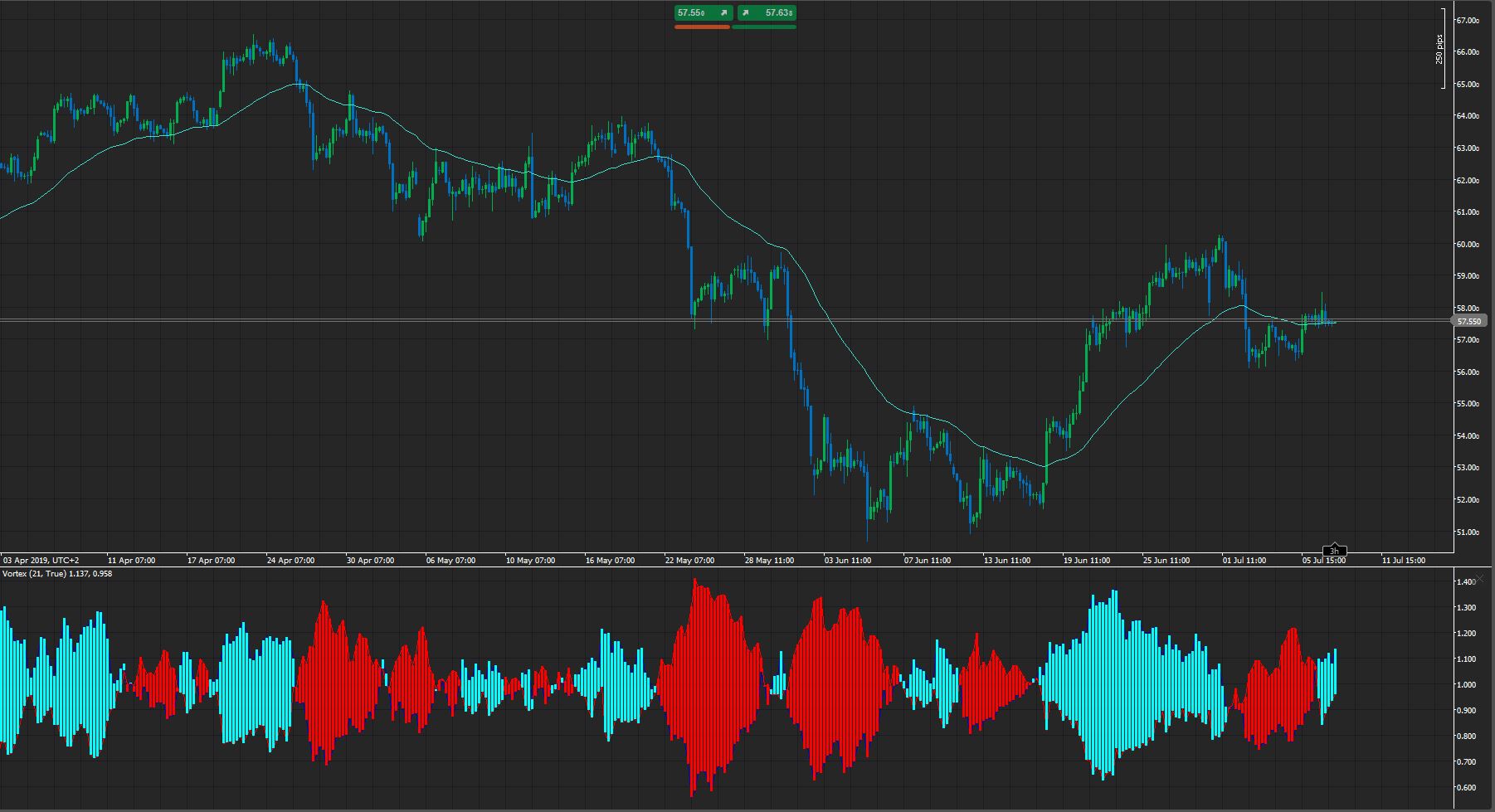The vortex indicator displays two oscillating lines, one for identifying positive trend movement and the other for identifying negative price movement. Buy and sell signals are activated by crossings between the lines and are intended to catch the most dynamic trending movement, whether it be higher or lower. The online share trading indicator has no neutral setting and will always produce a bullish or bearish bias. Indicators are created using the highs and lows of the last two days or periods. The difference between the current low and the past high indicates a negative trend, whereas the distance between the present high and the prior low indicates a positive trend. A higher distance between the two numbers indicates a strongly positive or negatively trending movement, whilst a shorter distance indicates a weaker trend.
A Vortex Indicator’s Mechanism Of Working
Two oscillating lines are drawn by the Vortex Indicator; one shows the positive trend, while the other shows the downward price trend. Buy-sell signals are therefore generated when the lines cross. As a result, the indicator has no neutral settings and always produces a bullish or bearish bias. The indicator is rather simple to understand.
Efficacy Compared to Other Indicators
Whipsaws will occur less frequently if the vortex indicator is set to longer periods, although delayed positive or negative crossings will result. On the other hand, cutting the duration will result in a lot of crossings without any real trend movement. Generally speaking, slow-moving assets will respond better to longer-term settings, while high beta stocks will respond positively to shorter-term settings.
By matching vortex indicator signals with those from other trend-following tools, you can increase indicator reliability. The arithmetic behind these indicators shares many characteristics with Wilder’s average directional index (ADX), the positive directional indicator (+DI), and the negative directional indicator (-DI).
These computations yield three lines that result in intricate crossovers. Wilder’s approach, in contrast to the vortex indicator, can produce neutral indications that advise traders to hold off or stay away from exposure.
Trading with the Vortex Indicator
Authors Botes and Siepman proposed a vortex indicator trading method intended to weed out and restrict misleading signals in the 2010 publication that first introduced the vortex indicator. The desired long or short entry price is the high or low at the time of the bullish or bearish crossover. Those levels might not be reached on the signal day, which would necessitate a buy or sell order that is good until cancelled and is held for a number of sessions, if necessary. The extremely high or low becomes the halt and reverse action level if it is present at the crossover. In this approach, a long position will be sold and reversed into a short position after the price returns to the excessive-high following a positive crossing and after the price returns to the far low following a negative crossover.
They also advise integrating these entry filters with additional risk-management strategies, such as profit protection stops and trailing stops. Even when the underlying trend fails to gain considerable momentum, these defensive measures reduce the incidence of false signals while maximising profit. This method does not address period duration, which may cause waves of false signals unless it is modified to the specified holding period and then extensively backtested.
Vortex Indicator Calculation
There are five steps involved in calculating the vortex indicator:
- Determine the upward and downward motions:
- The upward movement (VM+) is determined by subtracting the most recent low from the most recent high.
- The current low is subtracted from the prior high to determine the downward movement (VM-).
- Determine the number of periods:
- If the vortex indicator has 50 periods, perform the following calculation:
- VM50+ Means VM+ times 50 periods.
- VM50- is equal to VM- times 50.
- Determining the True Range (TR)
- The greatest of either of the following represents the genuine range:
- Current low minus current high.
- Current low, less recent closing.
- Present high less yesterday’s close.
Conclusions
One of the distinctive directional indicators is the vortex indicator. This indicator defines the general trend and offers distinct hints. The Vortex indicator can be applied to a variety of securities and time frames in all technical analysis tools and indicators. As an illustration, this stock investment app’s indicator can be used to define the larger trend on weekly and monthly charts. Then used to produce indications within that trend on daily charts. When the weekly chart’s Vortex indicator shows an uptrend, traders can only pay attention to bullish signals on the daily chart. When this indicator is in bear mode on the daily chart, traders can primarily focus on negative signals.
